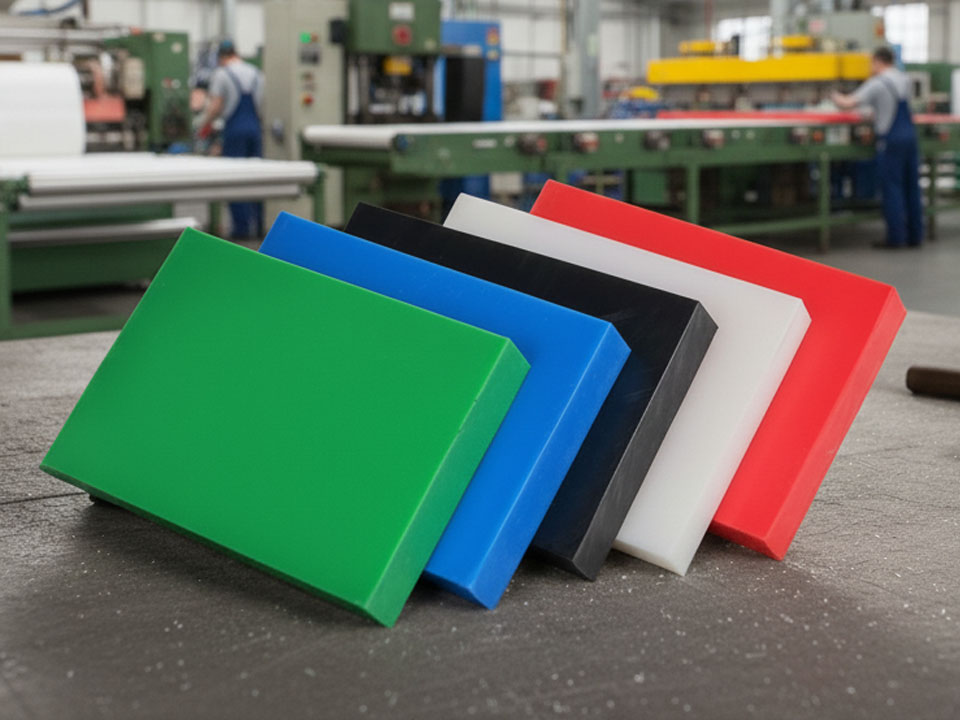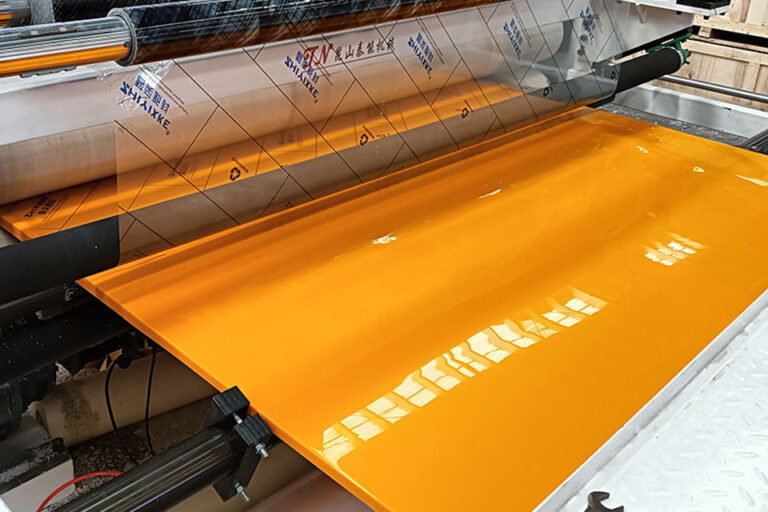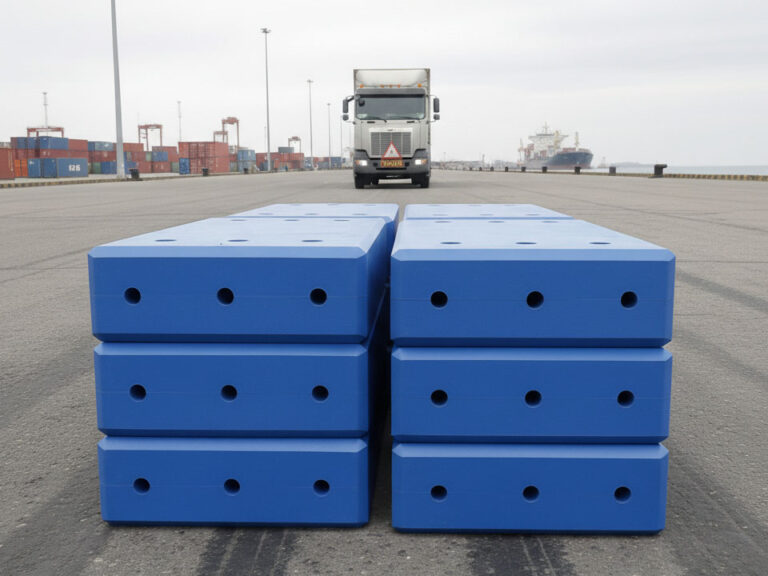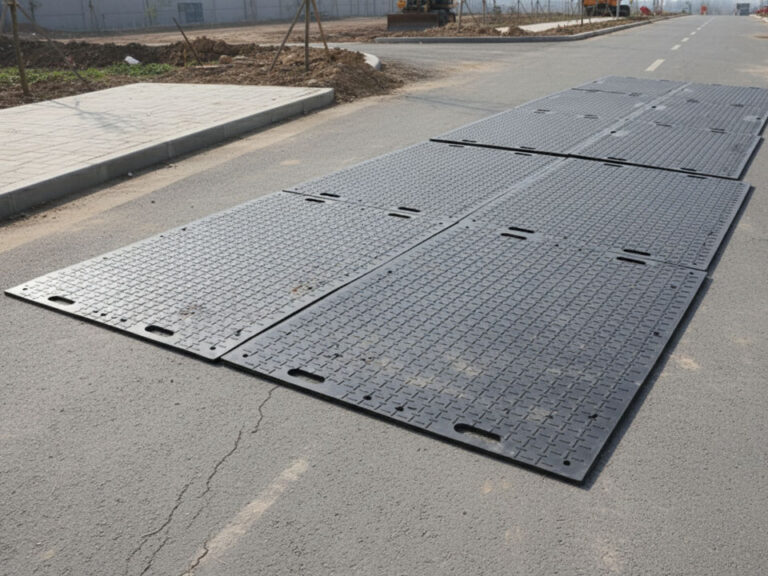-
Tian Dong Industrial Park, Decheng District Economic and Technological Development Zone, Dezhou City
What Is UHMWPE Sheet Used For
Summary
Ultra-High Molecular Weight Polyethylene (UHMWPE) sheets are a specialized form of polyethylene characterized by their exceptionally high molecular weight, which endows them with remarkable properties such as high impact resistance, excellent wear resistance, and low friction. These attributes make UHMWPE sheets invaluable in a wide range of applications, from orthopedic implants in the medical field to components in the mining, automotive, and aerospace industries. The versatility and performance of UHMWPE have solidified its status as a crucial material in contemporary manufacturing and technology.
Table of Contents
The significance of UHMWPE sheets is underscored by their historical development, which began in the 1950s with the introduction of GUR resins. Over the decades, their application in joint replacements has transformed the field of orthopedics, significantly improving patient outcomes due to their durability and biocompatibility. The continuous evolution of manufacturing techniques, including advanced polymerization methods and innovative processing techniques, has further enhanced the material’s properties, allowing for tailored applications in demanding environments.
Notably, UHMWPE has sparked discussions around sustainability and environmental impact, particularly in light of the increasing pressure on industries to adopt eco-friendly practices. Efforts to recycle UHMWPE and develop sustainable production methods are gaining momentum, presenting a potential solution to some of the environmental challenges associated with plastic waste. This focus on sustainability is not only critical for compliance with regulations but also reflects changing consumer preferences towards more environmentally responsible materials.
Despite its many advantages, the use of UHMWPE sheets is not without challenges. Issues such as high manufacturing costs, the need for specialized processing equipment, and regulatory compliance in sensitive applications can pose significant hurdles. However, ongoing innovations, including enhancements in material properties and the development of precision machining techniques, continue to expand the potential of UHMWPE across various sectors, ensuring its relevance and applicability in the future.
History
Ultra-High Molecular Weight Polyethylene (UHMWPE) has a rich history in its development and application, particularly in the field of joint replacement and industrial uses. The origins of UHMWPE can be traced back to the introduction of GUR (granular UHMWPE Ruhrchemie) resins in 1955 during the K-fair in Düsseldorf, Germany, where the first fabricated sheet and bar forms were also presented. These materials were developed at Ruhrchemie, which established a pilot plant in Oberhausen, followed by a commercial-scale production facility in 1960.
In the realm of orthopedic applications, UHMWPE has been the polymer of choice for joint replacements since the advent of total hip replacements. One of the early attempts at joint replacement occurred in 1890, when Berliner Professor Themistocles Glück created an ivory ball and socket joint. Subsequently, in 1936, the Judet brothers introduced polymethylmethacrylate as the first synthetic polymer used for femoral head replacements, although this material suffered from high wear rates, leading to early loosening.
The evolution of UHMWPE continued with the introduction of various grades, including “Hifax 1900,” which was widely used in joint replacements until it became unavailable for U.S. manufacturers in 2002. Both Zimmer Orthopedics and Biomet made significant purchases of this resin just before its discontinuation, allowing them to maintain production of implants made from 1900 resin for several years.
Over the decades, UHMWPE has diversified into multiple forms, including profiles, tapes, and custom-shaped components. Its exceptional properties, such as high impact strength, wear resistance, and biocompatibility, have led to its adoption across various sectors, from healthcare to material handling and defense applications. The continuous innovation in UHMWPE technology is paving the way for enhanced applications, with ongoing developments focusing on improved manufacturing techniques that yield stronger and lighter materials.
As industries increasingly prioritize sustainability, the ability to recycle UHMWPE further enhances its appeal, underscoring its environmental benefits while promoting a circular economy. The journey of UHMWPE reflects a growing understanding of its unique capabilities, solidifying its status as a vital material in both historical and contemporary contexts.

Manufacturing Process
Overview of UHMWPE Production
The manufacturing of ultra-high molecular weight polyethylene (UHMWPE) involves several critical processes, primarily focusing on the polymerization of ethylene monomers. This is predominantly achieved through a method known as Ziegler-Natta polymerization, where ethylene is polymerized using a specialized catalyst system that enhances the formation of long linear chains, minimizing branching to produce high molecular weight polyethylene.
Steps in Manufacturing
Polymerization
The first step in UHMWPE manufacturing is the polymerization process. This is typically conducted under mild conditions, at pressures between 4 and 6 bar and temperatures ranging from 66°C to 80°C. These conditions are essential to maximize molecular weight while ensuring a high-quality product with minimal yellowing during fabrication, often utilizing calcium stearate as an oxidant in the process.
Molding Techniques
After polymerization, UHMWPE is shaped using various molding techniques. The most notable method involves placing the powder into a mold, where it is then heated under pressure to achieve consolidation. This direct compression molding technique allows for the creation of complex geometries in a single step, resulting in components with smooth surface finishes and no external machining lines. However, this method can be relatively slow and costly, as individual molds must be created for each product, leading to increased production time and expenses.
Finishing Processes
Post-molding, the UHMWPE products typically undergo finishing processes such as skiving, where thick slabs are reduced to thinner sheets. This step is crucial for achieving specific thicknesses and surface qualities required for various applications in industries like mining, food processing, and heavy machinery.
Challenges and Innovations
The production of UHMWPE faces challenges, particularly due to high manufacturing costs associated with the complex processes and specialized equipment required. Recent advancements in technology, such as improved sintering techniques and additive manufacturing (3D printing), have begun to address these issues. These innovations enhance the precision of UHMWPE parts and reduce the time and costs involved in production, particularly for custom applications in the aerospace sector.
Through these methods and innovations, the UHMWPE manufacturing process continues to evolve, catering to the increasing demand in various industries for high-performance materials that exhibit excellent wear resistance and low friction properties.
Advantages
Ultra-High Molecular Weight Polyethylene (UHMWPE) sheets offer numerous advantages that make them a preferred material in various industrial applications. Their unique properties contribute to enhanced performance, longevity, and cost-effectiveness across multiple sectors.
High Impact Resistance
One of the most significant benefits of UHMWPE is its high impact resistance, which makes it ideal for environments where components are subjected to heavy blows or sudden impacts. Industries such as mining and construction greatly benefit from the durability and resilience of UHMWPE sheets, as this property ensures reliable machinery operation with reduced downtime for repairs or replacements.
Excellent Wear Properties
UHMWPE sheets exhibit exceptional wear resistance, allowing them to endure constant friction and wear without losing integrity. This characteristic is crucial in applications involving moving parts, such as conveyor systems and machinery components, where reduced wear translates to longer service life and lower maintenance costs. The material’s durability helps in extending the replacement cycle of parts, thereby leading to significant cost savings over time.
Superior Low Friction
Another remarkable feature of UHMWPE is its exceptionally low coefficient of friction. This property minimizes wear and tear on moving parts, resulting in smoother operations and energy savings as less force is required to move components against each other. The low friction characteristics make UHMWPE sheets particularly advantageous in applications like gears, bearings, and slide guides, enhancing operational efficiency.
Chemical Resistance
UHMWPE also boasts excellent resistance to a wide range of chemicals, including strong acids, alkalis, and organic solvents. This chemical resistance makes it suitable for use in harsh environments such as chemical processing and food manufacturing, where materials must withstand regular exposure to corrosive substances without degrading. This property ensures the integrity and performance of components over time, further contributing to their cost-efficiency.
Lightweight and Durable
The lightweight nature of UHMWPE, combined with its strength, makes it an excellent choice for the automotive and aerospace industries, where reducing weight is essential without compromising durability. This combination of properties ensures that UHMWPE sheets can be utilized effectively in various applications, from under-the-hood automotive components to lightweight structural parts in aircraft.
Comparison with Other Materials
Ultra High Molecular Weight Polyethylene (UHMWPE) sheets offer distinct advantages over other common industrial materials such as metal, wood, and other plastics. This comparison highlights key factors including durability, cost-effectiveness, and application suitability.
UHMWPE vs. Metal: A Study in Durability and Weight
One of the primary benefits of UHMWPE compared to metals is its significantly lighter weight. This characteristic is critical in applications that prioritize weight reduction, particularly in the automotive and aerospace industries. Additionally, UHMWPE exhibits excellent corrosion resistance, remaining unaffected by harsh chemicals and environmental conditions, which makes it ideal for use in chemical processing equipment and outdoor applications.
Cost-Effectiveness of UHMWPE Compared to Other Materials
While UHMWPE excels in durability and performance, its cost-effectiveness must also be considered. Although the initial investment in UHMWPE sheets can be higher than that of alternatives like HDPE, the long-term savings are often greater due to reduced maintenance costs and enhanced longevity in demanding applications. Industries such as mining and construction have increasingly adopted UHMWPE for its ability to withstand wear and reduce friction, thereby minimizing downtime and replacement costs.
UHMWPE vs. HDPE: Processing and Applications
When comparing UHMWPE to High-Density Polyethylene (HDPE), the processing techniques are a significant consideration. Both materials can be molded through methods like injection molding and CNC machining, but UHMWPE requires specialized tools due to its tougher structure and higher molecular weight, which can complicate machining processes. In contrast, HDPE is easier to work with and more economical for applications that do not demand the extreme durability of UHMWPE, such as lightweight containers and piping.
In terms of applications, UHMWPE is the preferred choice for high-impact and high-wear environments, such as in mining, automotive, and aerospace sectors, where it can withstand constant friction and chemical exposure. On the other hand, HDPE remains suitable for general-purpose applications where extreme durability is not essential.
Safety and Environmental Impact
Ultra-High Molecular Weight Polyethylene (UHMWPE) plays a critical role in enhancing safety in various applications, particularly within the automotive industry. Its high impact resistance allows it to absorb and dissipate energy during collisions, which helps protect passengers and maintain the functionality of safety features like bumpers and dashboards. This capability not only reduces the risk of injury but also contributes to the overall integrity of vehicle structures over time. Additionally, the durability of UHMWPE minimizes wear and tear on components, reducing the frequency of replacements and thus lowering maintenance costs.
Longevity and Maintenance Benefits
The longevity of UHMWPE results in significant economic benefits, such as reduced operational expenses for both consumers and manufacturers. Its resistance to chemicals and extreme environmental conditions reduces the need for frequent repairs and replacements, making it a cost-effective choice for vehicle safety components. Moreover, the integration of UHMWPE in automotive design can lead to substantial savings over the lifespan of a vehicle.
Environmental Benefits
Utilizing UHMWPE in automotive applications also aligns with sustainability goals. The lightweight nature of the material contributes to reduced vehicle weight, which lowers fuel consumption and greenhouse gas emissions. This reduction supports global climate initiatives and helps automotive manufacturers meet increasingly stringent environmental standards. Furthermore, the durability of UHMWPE results in fewer components needing to be produced and disposed of, thereby minimizing waste within the automotive industry.
Recycling and Sustainable Practices
Recent innovations in UHMWPE recycling methods highlight the material’s potential to contribute positively to environmental sustainability. Traditional disposal methods, such as landfilling or incineration, can lead to significant environmental concerns, including pollution and resource depletion. However, advancements in mechanical recycling processes have improved the quality of recycled UHMWPE while reducing energy consumption. These closed-loop recycling systems aim to maximize the recovery and reuse of materials, aligning with circular economy principles. Additionally, the integration of artificial intelligence and machine learning in recycling has optimized processes and improved product quality, further enhancing the sustainability of UHMWPE use in various industries.
Challenges and Solutions
The utilization of Ultra-High-Molecular-Weight Polyethylene (UHMWPE) sheets presents various challenges across different industries, necessitating tailored solutions to optimize performance and sustainability.
Market Dynamics and Environmental Considerations
One of the primary challenges faced by the UHMWPE sheet market includes environmental concerns related to production and waste management. As sustainability initiatives gain traction, companies are pressured to implement practices that minimize environmental impact. This includes recycling UHMWPE waste and developing eco-friendly production processes to comply with legal frameworks and consumer demand for sustainable products.
To address these challenges, manufacturers are increasingly investing in recycling technologies and exploring sustainable sourcing for raw materials. This approach not only aligns with global sustainability goals but also enhances brand reputation among environmentally conscious consumers.
Enhanced Material Properties
While UHMWPE exhibits exceptional wear resistance and low friction coefficients, advances in polymer technology have raised expectations for its performance. The demand for improved impact resistance and reduced friction is driving manufacturers to innovate further, creating advanced materials that can withstand greater stress and last longer in harsh environments.
To meet these expectations, companies are engaging in continuous research and development efforts, focusing on engineering UHMWPE sheets with enhanced material properties tailored for niche applications in industries such as automotive, food processing, and medical devices.
Customization and Precision Machining
The customization of UHMWPE parts through CNC machining poses its own set of challenges. Achieving high precision and intricate designs requires specialized equipment and expertise. Ensuring that custom shapes and sizes meet the specific dimensional requirements for their intended applications is critical for operational success.
Solutions to these challenges include investing in advanced CNC machining technologies and employing skilled machinists who can effectively navigate the complexities of UHMWPE fabrication. Manufacturers are also adopting collaborative approaches with end-users to ensure that the final products are tailored to address unique operational challenges.
Compliance and Quality Assurance
In industries such as medical and food processing, compliance with strict regulatory standards is a significant challenge. Maintaining cleanliness during the machining process and ensuring complete traceability throughout production are essential to prevent contamination and guarantee product safety.
To tackle these challenges, companies like PTSMAKE utilize dedicated equipment and tooling for medical-grade materials to avoid cross-contamination. Implementing robust quality assurance protocols and regular audits can further ensure compliance with regulatory requirements while enhancing product reliability.
By addressing these challenges through innovative solutions and strategic collaborations, the UHMWPE industry continues to expand its applications and maintain its position as a vital material across various sectors.
Recent Innovations
Recent advancements in Ultra High Molecular Weight Polyethylene (UHMWPE) technology are significantly expanding its applications across various sectors, particularly in defense and aerospace. Innovations in manufacturing techniques have led to the development of UHMWPE materials that boast greater strength and reduced weight, which are essential for creating adaptable and effective defense solutions. These enhancements in material properties also extend to UHMWPE composites, which, when combined with other materials, yield hybrid solutions capable of providing superior protection against diverse threats.
The aerospace industry is also benefiting from these innovations, as improvements in UHMWPE allow for the design of lighter aircraft structures that can accommodate increased payloads while enhancing fuel efficiency. Moreover, the sustainability of UHMWPE, which is recyclable and offers a longer lifespan than conventional materials, enhances its appeal in an industry increasingly focused on eco-friendly practices.
In addition to these broad applications, specific innovations such as advanced surface treatments and nanocomposite technology are revolutionizing UHMWPE performance. For instance, surface treatments can enhance properties such as scratch resistance and fire retardancy, while nanofillers are being employed to further improve performance characteristics. Recent developments also include the use of crosslinking techniques to bolster the wear resistance of UHMWPE orthopedic implants, which plays a crucial role in extending their lifespan.
The ongoing evolution of UHMWPE technology represents a pivotal advancement in materials science, with significant implications for future designs and applications across multiple industries.
Future Trends
The UHMWPE (Ultra-High Molecular Weight Polyethylene) industrial sheet market is set to undergo significant expansion in the coming years, driven by increasing adoption across various sectors and ongoing technological advancements. Market projections indicate a robust growth trajectory, with a compound annual growth rate (CAGR) of 4.4% anticipated from 2024 to 2030. This growth is further supported by the material’s inherent benefits, such as lightweight durability, which make it increasingly favored in diverse industrial applications.
Regional Insights
North America, especially the United States, is expected to remain a critical market for UHMWPE sheets. The region’s development is influenced by advanced manufacturing capabilities and the presence of major industry players. Additionally, Europe is forecasted to experience significant growth, alongside an emerging demand in the Asia-Pacific region, where rapid industrialization and rising healthcare expenditures are driving market expansion. This trend is particularly evident in countries like China and India, which are witnessing a surge in automotive and healthcare sectors.
Sustainable Manufacturing Practices
As the market evolves, there is a marked shift towards sustainable manufacturing practices. Manufacturers are increasingly focusing on reusing UHMWPE waste and minimizing energy consumption during production, aligning with global environmental standards and consumer demand for eco-friendly products. This sustainable approach not only addresses regulatory requirements but also enhances the overall competitiveness of UHMWPE sheets in the market.
Innovation and Product Development
The ongoing innovation in UHMWPE materials is paving the way for new applications and product developments. Research is being conducted on various forms of UHMWPE, including microporous polymers, which are expected to find applications in gas storage, carbon capture, and catalysis. These advancements will likely create further opportunities for UHMWPE in emerging industries, reflecting a broader trend of integrating new technologies into traditional manufacturing processes.
Competitive Landscape
Despite the competitive nature of the UHMWPE market, the optimism surrounding its recovery trends is encouraging new investments. Strategic activities such as mergers and acquisitions, product development initiatives, and comprehensive market analysis are becoming pivotal for companies seeking to enhance their market presence and innovate effectively. Notable players in the market, including Röchling, Quadrant Plastics, and GEHR, are actively investing in R&D to better meet the increasing demand for customized solutions across various applications.



